#HISTORIC PRESERVATION NYC
Explore tagged Tumblr posts
Link
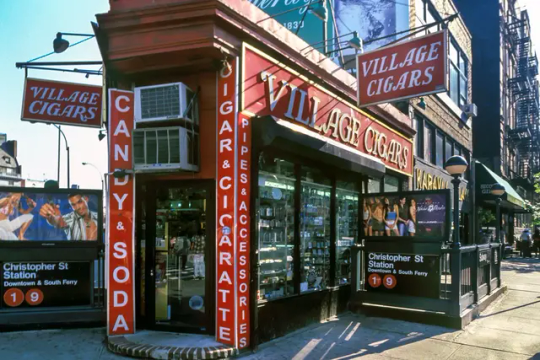
As the sun began to set on an usually bright February day in the West Village, a steady procession of middle-age men hoping to buy a smoke came up to the entrance of Village Cigars, yanked on the door handle, and found it locked. One after another, each man peered in through the glass storefront at the stripped shelves and empty display cabinets. ���This is very disturbing,” said Sean, a 53-year-old regular who has been coming to the store on Seventh Avenue since 1998. “I didn’t even know they were closing.”
#brick and mortar#cityscape#west village#preservation#historic district#new york city#nyc#village cigars#greenwich village#curbed
4 notes
·
View notes
Text
Preserving New York's Past: The Importance of Historic Preservation and Restoration Services in NYC
Preserving the rich history and heritage of New York City is an essential part of maintaining its unique character and charm. From the iconic brownstones of Brooklyn to the towering skyscrapers of Manhattan, the city is home to a wealth of historic buildings that tell the story of its past.
However, preserving these historic buildings is not just a matter of maintaining their physical appearance. It requires a deep understanding of their historical significance, the materials and techniques used in their construction, and the challenges that come with maintaining them in a modern urban environment.
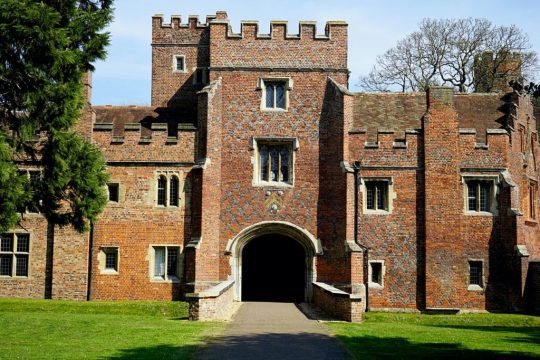
That's where historic preservation and restoration services come in. These specialized services are designed to help property owners and managers preserve the historic character and integrity of their buildings while also ensuring they meet modern safety and building code requirements.
Historic preservation services in NYC typically involve a thorough assessment of a building's historical significance and condition. This may include researching its history, analyzing its architecture and design features, and identifying any areas of deterioration or damage. Based on this assessment, preservation professionals will develop a comprehensive plan for restoring and maintaining the building's historic character while also addressing any necessary repairs or upgrades.
Historic restoration services in NYC, on the other hand, are focused specifically on restoring buildings that have suffered significant damage or deterioration. This may include repairing or replacing damaged materials, restoring historic features and finishes, and ensuring that the building meets current building codes and safety standards.

Restoration of historic buildings in NYC requires a high degree of expertise and specialized knowledge. Historic buildings often require specialized materials and techniques that may not be used in modern construction. Preservation professionals must also navigate a complex web of regulatory requirements and approvals to ensure that the restoration work meets all relevant standards and guidelines.
Overall, historic preservation and restoration services are critical for maintaining the unique character and charm of New York City's historic buildings. Whether you are a property owner, manager, or preservation enthusiast, these services can help ensure that these important landmarks are preserved for future generations to enjoy.
Contact us at 212-279-0000 today or Use our quote form to submit all details of your project. Get your Free Estimate - https://nycerny.com/quote/
#historic building preservation services#restoration of historic buildings in nyc#structural engineering design services#architects and building designer#architects and building designer in nyc#architecture building design#structural engineer#structural engineering#architectural design firm in nyc#building structural engineering services#best structural design engineering firm in nyc#building design#historic preservation services#historic preservation services in nyc#historic preservation and restoration#historic restoration services in nyc#facade restoration nyc#facade repair and maintenance services#exterior facade repair and restoration#facade restoration company nyc#facade restoration services in nyc#structural engineering design firm#structural engineering and architectural design firm#architectural design firm#architectural design
3 notes
·
View notes
Text
Feeling shrimp emotions about monumental examples of architecture being demolished/dismantled and the pieces dumped/scattered in unlikely places.
#architecture#historic preservation#there are marble staircases from Gilded Age mansions languishing in the Hudson River#entire film sets buried in the California desert#statues and columns from NYC's original Penn Station scattered throughout the country and rotting in New Jersey landfills#probably weird shit from past world's fairs etc although I can't think of any specific examples
1 note
·
View note
Text


X X
The Coney Island Thunderbolt in 1986, four years into its dramatic, slow-motion demise, having last carried riders in 1982, ending a service life of 58 years.
At this point, Thunderbolt had clearly had a, "Hey everyone, you seem to have forgotten to open the gates and let riders in the last couple of years. Surely this was just an innocent oversight, but if you clean me up a bit I promise to get right back to work. ;)" to them.
And with some opportunistic plants creeping in, but with the metalwork retaining its white paint rather than the rust that would follow, hope of its re-opening didn't seem beyond reason.
18 years later, on November 17, 2000 - The Coney Island Thunderbolt was bulldozed without warning, in the middle of the night, so as to avoid protests, having been denied even the courtesy of a professional structural analysis to determine if it was salvageable for restoration.
This took place while registrations for landmark protection status and plans for its restoration were known to be actively in progress.
The excuse given was that the ride was on the verge of collapse and imminently dangerous to the public, and the Thunderbolt seemed intent on displaying its remaining strength and discrediting this notion as a final act of disrespect to those fixated on senselessly destroying it.
In spite of the bulldozers and hydraulic claws, and other equipment having showed up past midnight as to avoid the illegal demolition being seen taking place in the light of day, the job was not so swift and simple a process of simply knocking it over as had been presumed, and the Thunderbolt instead needed to be gradually scrapped on site in phases, with one each section having to be deliberately weakened before it would actually fall, a process which by my research took at least two full days.
Many to this day report that it the Thunderbolt was demolished so that the baseball stadium, or its parking lot, could occupy the site. This is false, the stadium is to the WEST of the Thunderbolt's property footprint, and it's parking lot is even FURTHER west.
Then-mayor Rudy Giuliani was later forced to admit under oath to have illegally ordered the destruction of the Thunderbolt without due process, after he had previously lied to the public by claiming he wasn't involved.
The City of New York rewarded the Thunderbolt's owner, Horace Bullard, one million dollars in damages, which Giuliani refused to allow Bullard and his family to collect out of pure spiteful rage over the fact that the Bullards were granted any sort of official justice, even though Giuliani himself wasn't even being forced to pay a cent of his own money.
Don't get me started on the impostor Thunderbolt that Zamperla slapped together on the property as part of its impostor Luna Park in 2014.
After the senseless burning of the Tornado in 1977 by arsonists, and the assassination of the Thunderbolt in 2000, the Cyclone remains the only wooden roller coaster remaining on Coney Island.
#coney island#abandoned#derelict#nyc#new york city#this day in history#historic preservation#landmarks#amusement rides#amusement park#photography#1980's#80's#Giuliani
1 note
·
View note
Photo

Contemporary Exterior - Wood Inspiration for a large contemporary yellow three-story wood townhouse exterior remodel with a shed roof
0 notes
Note
please please please keep posting about buildings and trains and structures and all that stuff in NYC i love it so much! thank you
its literally my job right now to be researching it and its endlessly fascinating to me so the posts will absolutely continue 🫡
im also taking a class on nyc history archives once the fall semester starts so im expecting to get even more cool historical photos and information. heres some blogs that may be of interest to you and also are where i find some of the stuff i post
35 notes
·
View notes
Note
I learned recently that Emma Frost is actually a natural brunette (instead of blonde). However, I also recently read "X-Men Phoenix Warsong" where the rest of Emma's thousand daughters are revealed. In their capsules, they are all shown to have blonde hair, and since Sublime probably didn't see the need to dye their hair then I assume it's their natural color. Since the Cuckoos have different hair than Emma as well as an improved diamond form, I'm wondering if they aren't purely clones. Could Sublime have included the DNA of one or more other mutants to enhance their powers? Could the Cuckoos have a "father?"
Yes, Emma is a natural brunette (although her mother Hazel and most of her siblings are blond, which is plot relevant for later) who was relentlessly Mean Girled by the popular blond girls at her private school. There's a whole fascinating sexual psychodrama about how the ideal form that Emma transformed herself through extensive plastic surgery and high-end cosmetology and fashion into is the avatar of her stock photo "bullies" that I'm not qualified to get into, but needless to say Connor Goldsmith has you covered on this.
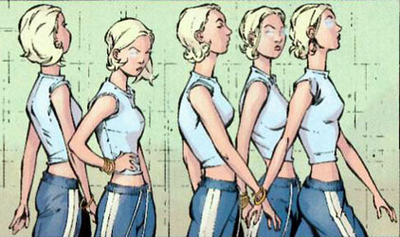
And yes, one of the many problematic elements of the creative decision to have the Stepford Cuckoos (hat tip again to Connor) be Emma's biological children is that they're all naturally blond identical quintuplets who all look like young Emmas, even though Emma's appearance is deliberately, consciously artificial and genetics does not work that way, Lamarck.
However, this is due in part to the fact that they are not technically clones of Emma - although they are clones of each other, created en masse originally in their thousands by the Weapon Plus program. That fact is potentially quite significant, because it is highly likely that the Cuckoos' genetic father chosen by Weapon Plus (out of some weird Lamarckian eugenic theory, because the Super-Soldier Serum does not work that way either) is none other than Steve Rogers (whose preserved DNA samples as part of Project Rebirth makes him also Weapon Zero), and who also happens to be blond with blue eyes.
I like this idea a lot, mostly for the comedy value of the whole Emma/Steve ship. The Cuckoos historically think that Cap is an old square (then again, they think anyone over thirty is old). But I do kind of love the thought of them trying to parent trap Emma and Steve together as a prank - only for Steve to become the most awkwardly well-meaning "dad who stepped up" ever. I think the Cuckoos would absolutely hate being dragged to Mets games, but they'd probably be really surprised when Cap takes them to MoMa the next weekend and demonstrates a frighteningly in-depth knowledge of art history and a surprising familiarity with queer NYC circa the 20s and 30s.
#xmen#xmen meta#marvel#marvel meta#emma frost#white queen#stepford cuckoos#steve rogers#captain america#weapon plus
77 notes
·
View notes
Text
I'm sure this has all been said before already, but it bugs me how a lot of fashion historians saw Greta Gerwig's Little Women (2019) and complained about the costumes in the epilogue sequence being historically inaccurate, without realizing that it's (probably) on purpose. "This is supposed to be the 1880s, why are they dressed like it's the 1860s!?" Because, in the film, the book's epilogue isn't real, it's a fictional ending Jo has written to neatly tie up the plot of the book she wrote based on her childhood in order to get it published. This is suggested by the fact that the lighting in the epilogue scenes is warm and fuzzy and dreamlike, the same lighting used in the scenes were Bhaer and Jo confess their love to each other (explicitly fictional in this film), while the lighting in the scenes of Jo in NYC watching her book being manufactured are cold and sharp, or "realistic". The fact that the two sequences are intercut with each other in the finale of the film strongly implies that the book's traditional epilogue is something Jo made up, and Jo's book Little Women going on to become a bestseller, thus achieving for her an independence, is her real ending.
"But why would the film invent a new ending?! That doesn't honor the book!" Because the film is instead honoring the author Louisa May Alcott, who never married and was almost certainly WLW in some form, as evidenced by her own words in surviving letters and preserved anecdotes. Alcott's book Little Women was heavily based on her own family and childhood memories, with Jo being heavily based on herself, and she invented a male love interest for Jo to make the book more palatable to Victorian audiences. But she herself was never interested in men and never desired to marry, and being financially self-sufficient was never induced to marry by necessity either. Several film adaptations had already been made of Little Women, all faithful to the book's plot, so Gerwig decided to take her adaptation in a different direction. And I respect that.
42 notes
·
View notes
Text
King George VI & Queen Elizabeth traveling in NJ and NY, 1939

Queen Elizabeth and King George VI wave from the Canadian Pavilion at the New York World's Fair in 1939. Here's a little about their journey on that jam-packed day:
On June 10, 1939, the King & Queen arrived in Red Bank, NJ via special train. From there they traveled a few miles by open car to Fort Hancock at Sandy Hook, where they boarded the US destroyer Warrington for the trip across the harbor to Battery Park in lower Manhattan. (This is video of Warrington crossing the harbor. You can see how hazy it was that day.)
Bertie & Elizabeth were excited to see the New York skyline come into view, and when the ship passed the Statue of Liberty, they stood up from their deck chairs to get a better look.
These places are well known to me, and I always get a little bit of a fangirl thrill knowing I could be walking in Bertie's footsteps. 😊

The Sandy Hook ferry terminal today - most likely this was area where Warrington embarked from back in the day.

Fort Hancock is defunct now, but much of the old buildings and fortifications remain through preservation efforts, like these Officers' Quarters, which always make interesting pictures.


At the start of this very long day, the King & Queen first arrived at the train station in Red Bank, NJ, traveling from Washington DC. Here, they are disembarking the Royal Train and meeting with dignitaries. (photos from NPS and some fun first-hand recollections.)


The Red Bank train station today.

USS Warrington arriving at its ultimate destination - Battery Park in NYC. An enormous crowd awaited the royal couple, greeting them with thunderous cheers. Then they were whisked away again in cars for a high speed journey up the West Side Highway to visit the World's Fair in Queens.

Battery Park isn't the easiest spot to photograph right now because there is a lot of construction in the area. But this is opposite side view of the Pier One building where they would have docked. (you can see just the edge of it all the way on the right in the gif above of the ship arriving.) I'm standing at about the point where they would have gotten onto the West Side Highway.
Adding this last bit for fun, though I've shared it before. This is the breathless commentary of reporters and police dispatchers leading the royal entourage as they progressed from the USS Warrington to Pier One at the Battery, onto the West Side Highway and Grand Central Parkway, all the way to the 1939 World's Fair.
It was very unique reportage because this was the first time something like this was attempted on scene; going live to different reporters dispersed throughout the route, in cooperation with the NYPD and using their radios. It was considered a very challenging undertaking and cutting edge for it's day.
The recording is rather long (dispersed with regal marches when they had nothing to talk about!) but it is a very fun listen if you are interested in this sort of historical thing; especially when the crusty New-York-accented reporters get swept away with Royal Fever - "oh he's handsome!" and "oh she's lovely!" 😂
#king george vi#queen elizabeth#royal tour 1939#bertie & elizabeth#the royals take manhattan#bertie in my hood#walking in bertie's footsteps#sandy hook nj#usa39#history is all around us#New York Goes King Crazy#george vi#british royal family#USS Warrington#oh he's handsome!#new york#1939 World’s Fair
10 notes
·
View notes
Text
youtube
Did you know that a single tree can be made to produce multiple types of fruit? In this workshop led by artist and fruit tree expert Sam Van Aken, you will learn the basics of grafting, the ancient agricultural practice that makes hybrid trees possible.
Webinar facilitated by Sam Van Aken on May 16, 2020. Offered in partnership with the Trust for Governors Island Open Orchard Project: https://www.govisland.com/things-to-d...
The Open Orchard School is a two-year series of educational programs co-presented by NYC Parks GreenThumb and the Trust for Governors Island. The Open Orchard School is an extension of The Open Orchard, an expansive new artwork by Sam Van Aken on Governors Island that will take the form of a public orchard of 50 hybrid fruit trees. Each individual tree will contain multiple varieties of peaches, plums, apricots, nectarines, cherries and apples that were historically grown in the New York City region over the past 500 years, but which have been lost to climate change and the industrialization of agriculture, preserving their biodiversity for future generations. Many additional trees will be distributed to community gardens in all five boroughs. Through the Open Orchard School, community gardeners and members of the public will learn practical skills related to the project, including in-depth experience with fruit tree care, cultivation, planting, and grafting. Participants who complete multiple workshops can become part of the team working to ensure the ongoing stewardship of the trees as they put down roots across the city.
#NYC Parks GreenThumb#solarpunk#Sam Van Aken#tree#fruit trees#grafting#tree grafting#how to#how to graft#workshop#webinar#gardening#hybrid trees#Youtube
38 notes
·
View notes
Text
youtube


Jonathan talks at 1.00.30 in this video honouring Stephen Sondheim on February 14 2024 after a matinee. Jonathan discusses when he visited Stephen Sondheim’s townhouse, meeting Lonny Price, what he said to Patti LuPone recently, an early connection with Sondheim at a school science fair, and his views on the character of Franklin Shepard.
From the YouTube description: The program was led by Barbaralee Diamonstein-Spielvogel, Chair of Historic Landmarks Preservation Center and NYC Landmarks60 Alliance.
Participants in the program include: James Lapine, Librettist and director Patti LuPone, actress and singer John McWhorter, Columbia University Professor of Linguistics and author, Jonathan Groff, actor and singer, John Weidman, Librettist Liz Callaway, Grammy-nominated singer.

17 notes
·
View notes
Text
In the heart of New York, where the past converges with the present, facade restoration is a testament to the city’s enduring spirit. As you embark on your journey to find the best facade restoration experts, remember that preserving the facade is not just about maintaining a building – it’s about sustaining a piece of history for generations to come. Choose wisely and let your building’s facade tell a story that transcends time.
#best facade restoration experts#FACADE RESTORATION#facade restoration company nyc#historic preservation services
0 notes
Text
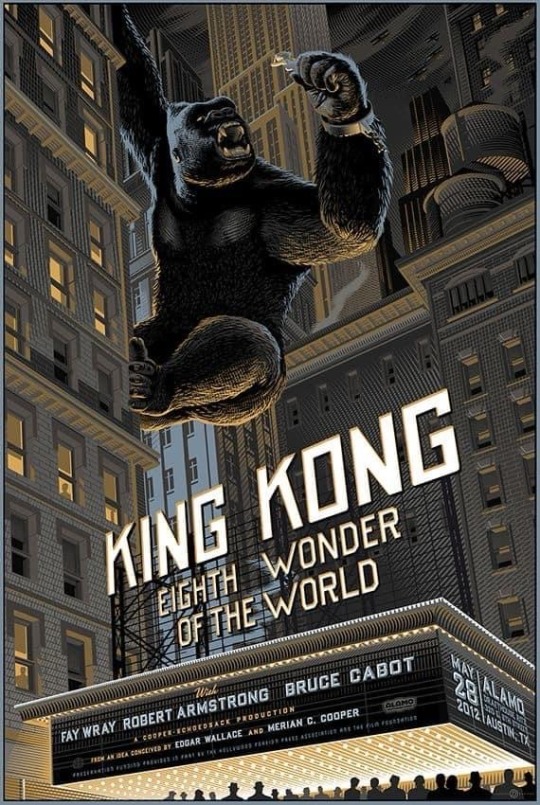
March 2, 1933 "King Kong" film directed by Merian C. Cooper and Ernest B. Schoedsack, starring Fay Wray premieres at Radio City Music Hall and RKO Roxy in NYC.
King Kong opened in New York City on March 2, 1933, to rave reviews. It is ranked by Rotten Tomatoes as the greatest horror film of all time and the fifty-sixth greatest film of all time. In 1991, it was deemed "culturally, historically and aesthetically significant" by the Library of Congress and selected for preservation in the National Film Registry.
13 notes
·
View notes
Text
If you are planning on fleeing a red state, here is my pitch for moving to Chicago

I am a lesbian and a lifelong Chicagoan and I fuckin love it here. I grew up here, went to college here, and now live here as an adult, and I have no plans to leave. Despite being the 3rd biggest city in America, Chicago gets weirdly overlooked a lot and many people have never even been here.
If you are fleeing a red state because you're LGBTQ+, a woman, or an immigrant, here are the reasons I think you should move to Chicago:
We're a super queer-friendly city with several historically queer neighborhoods (that are actually affordable enough to live in).
Illinois has literally never voted red in my entire lifetime. That's the entire 21st century so far, btw.
We have a looooong history of fighting for abortion rights, even helping women get care before it was legal (google the Jane Collective).
Although there are red counties in the more rural part of the states, the blue influence of Chicago spreads far beyond the city's official borders. Chicago has such a large network of sprawling towns around it that still feel like a part of the city that we have a name for it: Chicagoland! So even if you're not a city person, you can find lots of more rural spaces within Chicagoland.
If you can't stand the idea of living too far from nature, never fear: there are tons of gorgeous nature preserves around Chicago! I grew up in a suburb where both the city border AND a forest preserve were a bike ride away.
Illinois has a great governor, J. B. Pritzker, whose response after the recent election was "To anyone who intends to come take away the freedom, opportunity, and dignity of Illinoisans, I would remind you that a happy warrior is still a warrior. You come for my people – you come through me."
We're a very diverse city with a large immigrant population. (Fun fact: the only city with a larger population of Polish people is Warsaw.) We have many localized ethnic neighborhoods all over the city. Which ties into my next point...
We have amazing food! Seriously, Chicago is super overlooked as one of the best eating cities in the country. I can find literally any cuisine from any country somewhere in Chicagoland, and we have everything from 3 Michelin star restaurants to hidden gem counter service spots with the best tacos al pastor you've ever had.
We have very strict gun control laws. Unfortunately, people get around these laws by going to Indiana to buy guns (thanks a LOT, Indiana), but the extra hassle means that there are actually fewer guns here than in red states and no one can open carry.
Chicago has a $15 citywide minimum wage and has plans to phase out tipping in restaurants (replaced with higher salaries).
We have really amazing museums like the Art Institute of Chicago (widely considered to be one of the best museums IN THE WORLD), the Field Museum (home to the most complete T-Rex ever, our beautiful mascot Sue), as well as a great aquarium, modern art museum, planetarium, and so many more I can't list them all. And they all have free days for Illinois residents!
We have great public transit. I don't own a car, most of my friends don't own a car, and we can get around just fine.
We never have hurricanes because we're a LAKE city, baby. We do have tornados but they rarely hit the actual city, they tend to stay out where there's more open space.
Cost of living is lower than other major blue cities like San Francisco and NYC
We have two baseball teams so that's double the baseball
Broadway shows frequently do a premier in Chicago before they open in NYC so we get a lot of huge musicals here. I've gotten free tickets to shows that later went on to tour the country.
Unlike SOME other large blue cities I could mention, we know how to put our trash in DUMPSTERS instead of IN THE STREET.
Giant bean
Your life will change after you've had a juicy Italian beef sandwich with hot giardiniera.
And finally, to address all the stories about Chicago being a crime-ridden warzone, here's the deal: they are simply not true. Where do those stories come from? It's simple: Chicago has a historically large black population and we're a liberal city. Racist republicans have convinced themselves that this means we must be a haven for crime. We have the same amount of crime as any large city, which is to say: far less crime per capita than in rural red areas. Seriously, look it up.
Not only is Chicago not the most dangerous city in America, we don't even make the list of the top 25.
But the thing is, those lies about Chicago actually kind of work in our favor, because it means that Republicans are too scared to come here. My own grandparents haven't visited in 10 years because they're convinced that if they do they'll get shot or something.
Anyway, move to Chicago, it's great here. And it'll probably be one of the safest strongholds for whatever comes in the next 4 years. If you're also from Chicago and have any other points I missed, please add them!
5 notes
·
View notes
Text
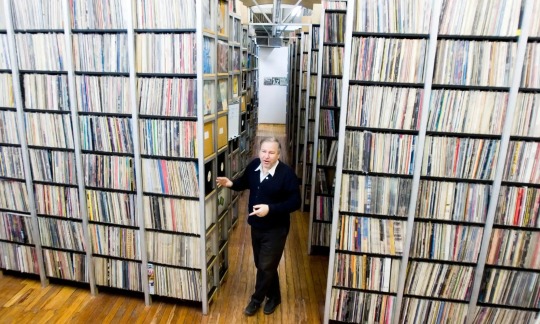
Bob George in the ARC NYC stacks. Photograph: unknown/ARC NYC ...
‘No one else is saving it’: the fight to protect a historic music collection ...
It all started in a loft in Tribeca, New York, long before it was a trendy neighbourhood. “I had 47,000 records and nobody wanted them,” recalls Bob George, who had just published a discography of punk and new wave music. “That led a lot of people coming to me and saying you have to save this stuff; no one else is saving it. That got the ball rolling in my loft in what is now fashionable Tribeca, which was an incredibly unfashionable war zone in 1974 when I was first there.”
George turned his record collection into the ARChive of Contemporary Music (Arc) in 1985 with co-founder David Wheeler. The non-profit music library and research centre now contains more than 3m sound recordings or over 90m songs, making it one of the biggest popular music collections in the world. Donors and board members have included David Bowie, Jonathan Demme, Lou Reed, Martin Scorsese and Paul Simon.
The Arc is not open to the public but has been a vital resource for film-makers, writers and researchers ranging from Ken Burns looking for a song for his series Baseball to the new Grammy Hall of Fame and Museum in Los Angeles needing cover art for its inducted recordings. Now, however, this unique treasure trove is under existential threat.
The Arc cannot remain at its current Hudson Valley premises indefinitely and is in need of a new and bigger home. “We have to move and we don’t know when we’ll have to move and the collection is really at risk because it’s all on pallets,” says George, who dreams of a patron like James Smithson, the British scientist who left his estate to the US to found the Smithsonian Institution. “We’re looking for someone to help us buy a very wonderful property or for us to build a new building on vacant land in upstate New York.”
After growing up in Youngstown, Ohio, George moved to New York in 1974 as a visual arts student and started collecting records as a DJ. In 1981 he released Laurie Anderson’s first single, O Superman, which sold nearly a million copies worldwide and made it to number on the UK singles chart. He was a guest on John Peel’s beloved BBC radio show, sneaking in little-known records from New York, and took music to European broadcasters too. People kept giving him records that other collections turned down.
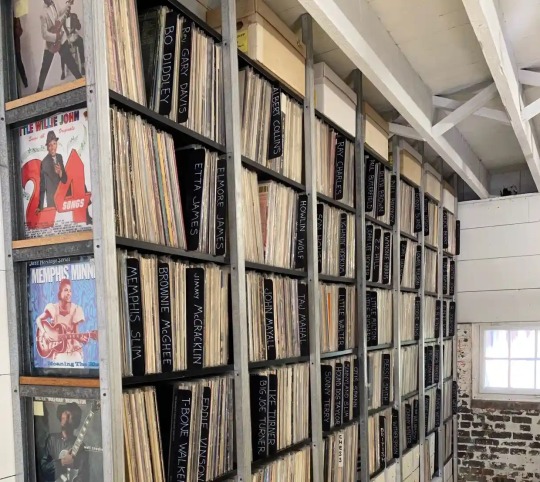
Some of the 18,000 recordings in the Keith Richards Blues Collection. Photograph: Arc NYC
“I was doing the book and then doing Peel shows and it accidentally became this large collection that nobody wanted. They kept saying, oh, we collect classical, we collect Broadway, we collect ethnic music. I said, well, I have funk, reggae, African and hip-hop and they said, oh, no, we don’t collect any of that. Forty years later, I say, you put all those together and that’s what music has become.”
The simple goal of the archive, which has always had a peripatetic existence, is preservation. “We have no interest in quality,” George cheerfully admits. “It started that way from the very beginning because there’s no way to tell what’s valuable in the future. Everybody brings their own criteria and tastes to things in their own time. But the future is quite different, as we hope.”
The archive has never received aid from any city, state or federal organisation but its scale gives the Library of Congress a run for its money. It has absorbed major collections from musicians and fans and is home to most of Rolling Stone Keith Richards’ extensive blues inventory.
George dispatched two semi-trailers to a condemned house in Boston sinking under the weight of Jeep Holland’s set of more than 125,000 recordings and over 2,500 signed albums from the likes of the Stones, Jimi Hendrix, Bob Marley and the Sex Pistols. “Going towards the bathroom, he has a gas stove, the pilot light is on, there are records in the oven. It was just a storage space ... His car had become so full of records that he abandoned it and rented a car.”
George has made repeat trips to countries such as Brazil, Cambodia, Colombia, Cuba, Japan, Jordan, Laos and Thailand. The Arc contains Demme’s personal collection of Haitian albums. More than 150,000 pieces of world music have been catalogued; there are plenty more to do. “We’ve tried to get as much of that material as possible so that collection is just fabulous.”
The Arc preserves copies of every recording in all known formats. It has electronically catalogued more than 400,000 sound recordings and digitised 200,000 with the Internet Archive – more than any other public university or private library in America. It also contains more than 3m pieces of material including photos, videos, DVDs, books, magazines, press kits, sheet music, ephemera and memorabilia.
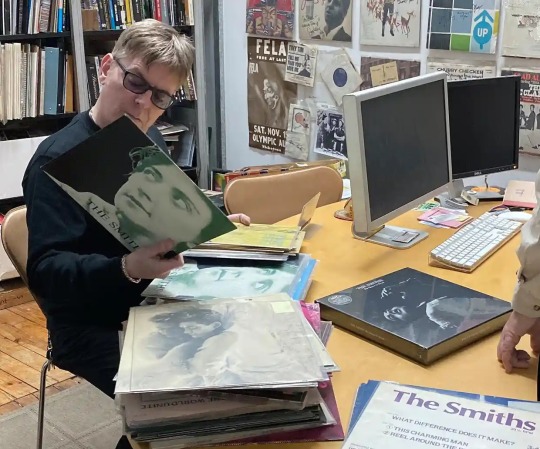
The late Andy Rourke of the Smiths at Arc looking at Smiths records he had never seen. Photograph: Arc NYC
George says: “We catalogued 105,000 singles just recently; we have another 200,000 or 300,000 to go. This is the first way a band at one time got their feet in the water. They put out one or two or three singles. If they did hits, they got the chance to do an album and so much of this material does not exist on LP or CD. Little by little more of it might be streaming because of YouTube, as people can get away with murder on YouTube, which is great, but YouTube will disappear. Everything commercial will disappear.”
Among those who have turned to the archive is the Oscar-winning director Ang Lee, who wanted records by the singer Bert Sommer for his film Taking Woodstock. “The archive is amazing because we don’t know what we have until somebody needs it. We’ve been into the stacks and we found five LPs by Bert Sommer. For me, it’s like I have no idea who this guy is and what he did; he’s sort of a folkie. For Quincy Jones, we just sent him a list of the 8,000 things that he’s either produced or on.
“Research was how we basically stayed alive along with the largesse of the rock stars or celebrities that we had hooked up with. The idea was never to open to the public but that’s what we want to do now. I don’t think it’s untrue that we’re one of the largest in the world and that we want to make that available. We’ve tried to save two copies so there will always be a listening copy and then that would then become a listening library.”
George hopes the new archive will be open to students, educators, historians, musicians, authors, journalists and the general public. An anonymous donor has come forward with a million dollars to help realise that dream but more money is urgently needed. One possible new home is an abandoned IBM campus spanning 34 acres, although that would cost $8-10m. George is considering partnering with an upstate university and has plans to offer residencies for scholars.
“People could come in and produce a work, and that would go out into the world. It could be a blog, essay, tape, compilation, new recording, whatever. We’re really quite un-academic. I’m against it somewhat and I’d like people to have ideas and bring those ideas and put them back into the world as opposed to making it an interactive experience for everybody. I don’t want to be Disney World. It’s nice to have seminars. It’s nice to have listening parties. It’s nice to have dances.”
source
6 notes
·
View notes
Note
i know new york being the ancestral homeland of jews is a joke but as a jew from europe it literally feels that way. like i cannot imagine like a whole street written in hebrew. like i want to go there just to see that. i dont think jews inthe united states are aware of how good they have it
i do want to note that america is also a settler colonial state and its only because of specific american aims of the settler project and material realities of the economy and the physical land they were trying to settler that theyve had this “melting pot” ideology where jews were incorporated similarly to italian and irish immigrants, instead of continuing to have deeply ingrained religious and cultural antisemitism like europe. there were in some periods of us history more restrictions on jewish immigration and some institutional barriers for jews, especially before and during ww2, but never to the same degree as europe. although american jews were rarely (if ever, i dont know any examples but there could be some) violent genocidal settlers like the anglos and generally migrated later, we were still settlers searching for economic interests provided by american expansion on native land. that being said were here now and have the status of any other american settler (meaning people who arent indigenous or descended from enslaved people brought here against their will) most indigenous theorists and activists maintain that they want sovereignty, reparations, companies to stop destroying native land, etc, not every american settler to leave. i really believe that the united states also must fall, but i dont think this makes us like not belonging, at least any more than the other settlers.
i just want to say this to explain that my love for new york and the east coast us is complex. objectively the multicultural and cosmopolitan aspects of nyc that make it unique are products of american imperialism– for example nyc is the most linguistically diverse city in the world! over 600 languages are spoken here, including languages that arent spoken anywhere else anymore, but think about why that is. and the flourishing of jewish communities and culture in parts of the us was a product of specific historic processes and policies, and we like any other descendants of settler-immigrants have to grapple with that. i think its possible to oppose and fight against american imperialism and settler colonialism and still deeply appreciate the contradictory aspects of culture in america. (which lbr all the dynamic and interesting and worth preserving things about american culture were not created by anglos, but by outsiders and oppressed people) anyways this is all just to say im really not coming at it from a nationalist perspective but a diaspora perspective but yeah, new york is such a jewish city its genuinely incredible. this is why i especially despise tri state area zionists... youre ignoring that you live in the greatest place in the world for jews. literally the most jewish city in the world. like theres a moving company called schleppers here, yiddish words are part of everyones dialect, you can get the best jewish food everywhere from delis that are like 100 years old, we literally have a truck called the mitzvah tank that chabad drives around and asks people on the street if theyre jewish. the only romaniote synagogue in the western hemisphere is here and they have a greek jewish festival every year (which unfortunately is always covered in israeli flags -_-) the whole foods by one of my work sites had a sign up for yom kippur catering because the neighborhood is so jewish.
jewish culture and history and jews in general are just part of the fabric of life in new york. also whatever street youre talking about was probably written in yiddish since thats what most of the hassidic jews speak here! nyc has the largest concentration of yiddish speakers, which isnt surprising, and its the 8th most spoken language in nyc. theres also a big and still growing bukharian community here too. if you ever can, i really recommend visiting new york. theres so much jewish culture and history here. a lot of american jews live much more isolated, so i cant speak for them, but for many parts of the north east i feel that were lucky. antisemitism exists here but idk ive grown up in pretty jewish areas and never really experienced it. europe sounds legitimately shitty. also... fun fact, netanyahu went to high school in the suburbs outside of philly
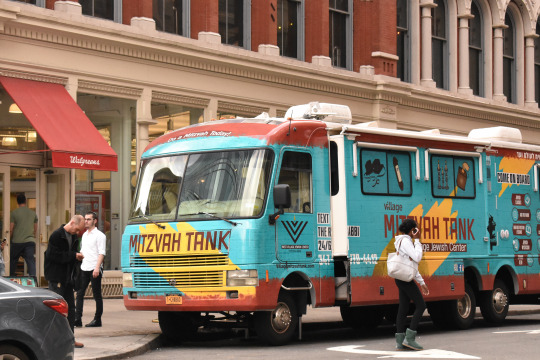
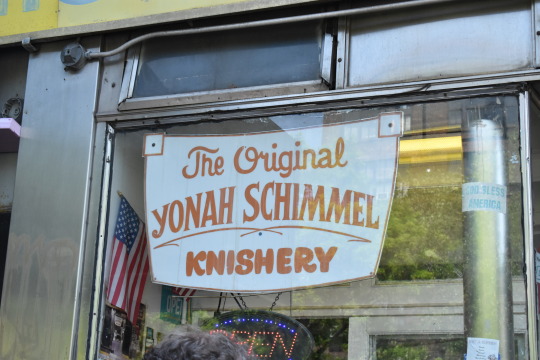
^my photos in the lower east side, and heres some photography of hassidic williamsburg too
also williamsburg
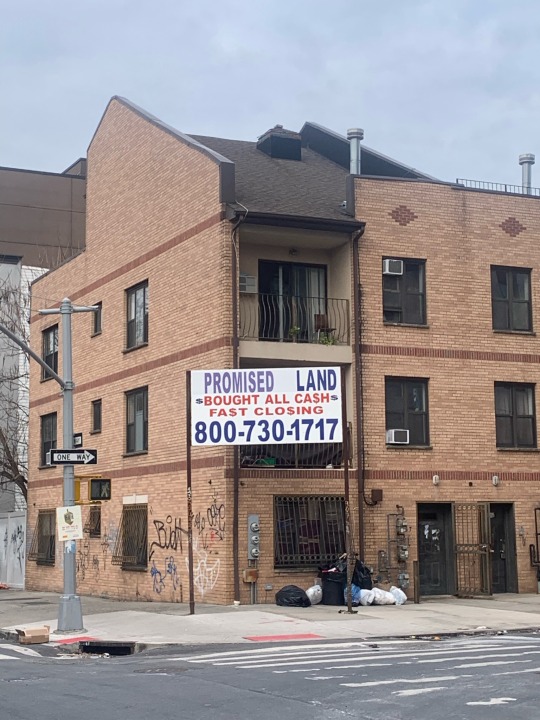
81 notes
·
View notes